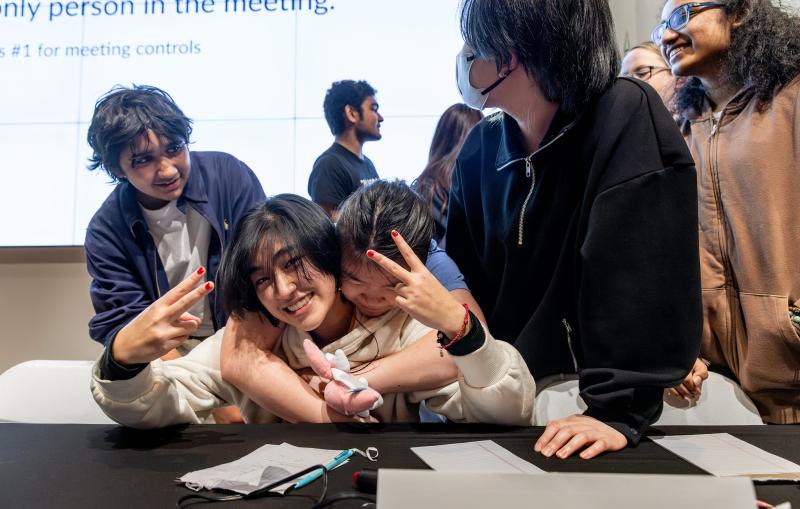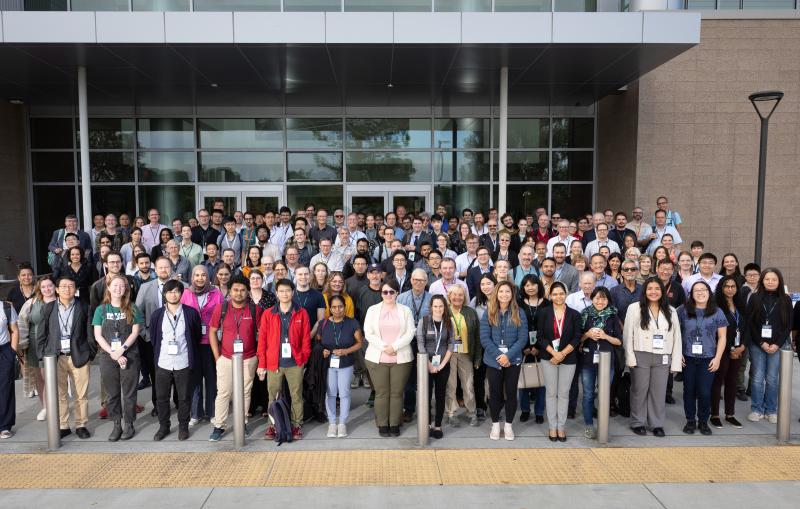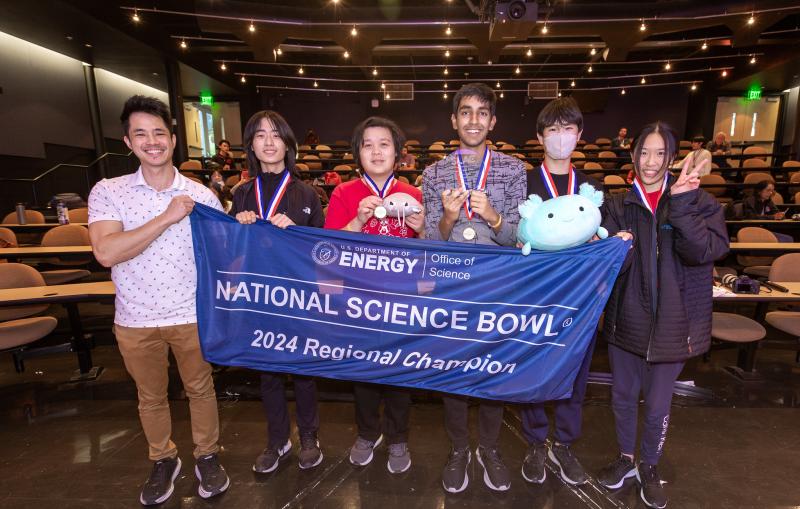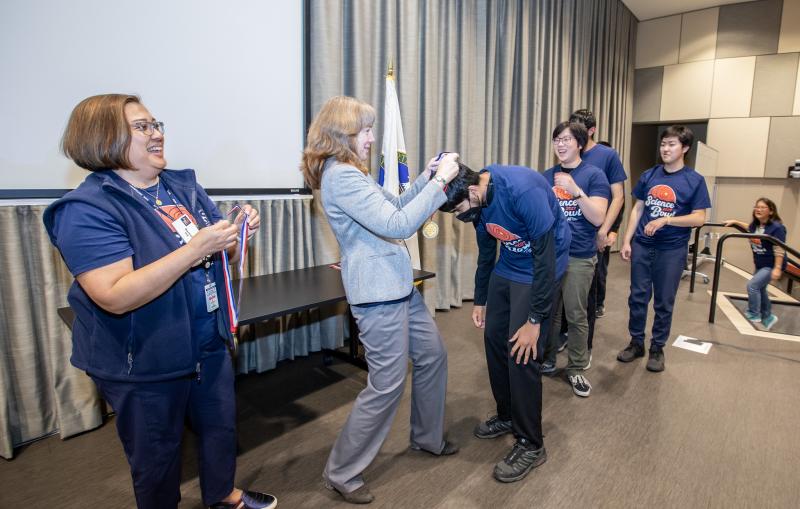Lynbrook High claims 2021 SLAC Regional Science Bowl victory
The pandemic forced major changes to the format, but 30 teams from 22 schools still came together online to vie for a slot at nationals.
Every year around this time, students come from around the Bay Area to the campus of the Department of Energy’s SLAC National Accelerator Laboratory to jockey for title of Regional Science Bowl champion.
This year was going to be different, what with the global pandemic forcing competition online. Still, teams from San Francisco to Saratoga answered the video conference call on February 6th, and when the day was done and everyone had closed their laptops, San Jose’s Lynbrook High School was victorious.
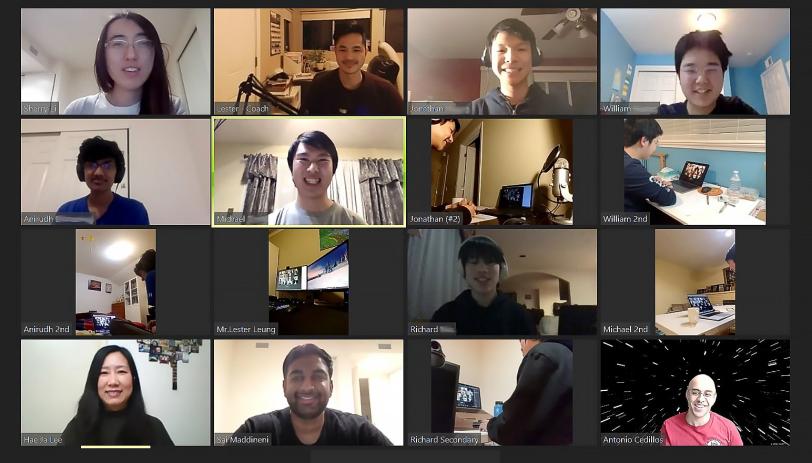
“We definitely felt a little nervous,” said Lynbrook coach and chemistry teacher Lester Leung, but when the team learned they won, it was more or less like any other year. “Several students jumped out of their chairs,” he said. “One almost fell over.”
“It was fun to see so much excitement and joy, especially since this time has been really hard on a lot of people and especially students, who thrive in social environments.”
Jonathan Huang, team captain and a senior at Lynbrook, put it succinctly: “We were just happy.”
Pandemic preparations
The pandemic was on everyone’s minds going into this year, said SLAC events specialist Molly Glover, who has led the team organizing Science Bowl events at SLAC since 2019. Even some of last year’s regional competitions had to be moved online, as did the national event.
“I realized at that point that this year’s regionals would probably be virtual,” Glover said, and the National Science Bowl made that hunch official last October. “It was definitely anxiety-inducing, but knowing we had support from the national team made it easier.”
Among her concerns were whether teams would actually want to show up for the virtual competition. Ordinarily, those teams have the chance to meet other students interested in science and get tours of SLAC, and without those opportunities, maybe fewer schools would be interested in sending teams.
In the end, 22 schools sent a total of 30 teams – two more than last year.
A new way to compete
This year’s format saw each team gather via video conference to answer a series of questions covering physics, chemistry, biology, math and more, said event co-organizer Rachel Isip, SLAC’s outreach and events manager. After each round, volunteers tallied scores, and the teams who answered the most questions correctly advanced until only two teams –one from Lynbrook High School and one from the Harker School – were left.
Ordinarily, high school teams meet in person on campus at SLAC and pair off for head-to-head rounds. “That went out the window,” Isip said, “but the goal of encouraging and promoting STEM hasn’t changed.”
Micha Ben-Naim, a Stanford chemical engineering graduate student who has helped out for the past five years and once competed in Science Bowl in his native New Mexico, said that although spending 10 hours on video calls was “a lot,” the experience was still worth it. “It exceeded my expectations. It was exciting to see the teams learn to use this format really quickly.”
And overall, things seemed to have gone smoothly – this year, after all, no one could get lost on the way from one round to another. “There’s always a couple things that happen,” Glover said, “but it went well.”
Lynbrook celebrates
Leung and Huang said that they knew fairly early on that preparing for this year’s competition would mean more studies instead of training to buzz in and answer quickly. “Knowledge was the key,” Leung said.
Huang said that many of the same things he likes about Science Bowl remained a part of this year’s events. “I feel it rewards teamwork, camaraderie, your ability to think on the spot. Those are unique aspects I really enjoy.”
And, Leung said, the excitement remained. “There was still a buzz in the room.”
But as the team prepares for the national competition – starting with more studies and a scrimmage of sorts organized by Lexington High School in Massachusetts – there will be some things they miss.
“Something about National Science Bowl that I appreciate and find rejuvenating is that this is really a community,” Leung said. He recalled past years watching teams sharing lunch, meeting each other and just hanging out. “It’s special.”
Special enough to stay involved after high school? “Yeah for sure,” Huang said. “Hopefully the college where I go will have a program and I can help out.”
The DOE’s Office of Science manages the National Science Bowl® and sponsors the finals competition. The Office of Science is the single largest supporter of basic research in the physical sciences in the United States and is working to address some of the most pressing challenges of our time.
For more photos of the 2021 SLAC Regional Science Bowl, click here.
For questions or comments, contact the SLAC Office of Communications at communications@slac.stanford.edu.
About SLAC
SLAC National Accelerator Laboratory explores how the universe works at the biggest, smallest and fastest scales and invents powerful tools used by researchers around the globe. As world leaders in ultrafast science and bold explorers of the physics of the universe, we forge new ground in understanding our origins and building a healthier and more sustainable future. Our discovery and innovation help develop new materials and chemical processes and open unprecedented views of the cosmos and life’s most delicate machinery. Building on more than 60 years of visionary research, we help shape the future by advancing areas such as quantum technology, scientific computing and the development of next-generation accelerators.
SLAC is operated by Stanford University for the U.S. Department of Energy’s Office of Science. The Office of Science is the single largest supporter of basic research in the physical sciences in the United States and is working to address some of the most pressing challenges of our time.

